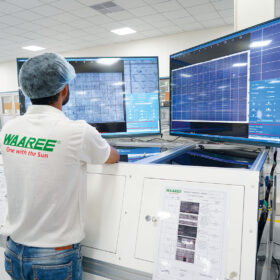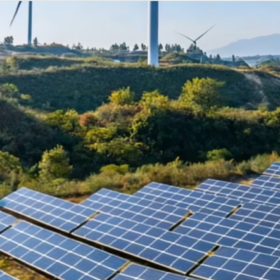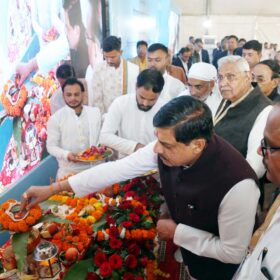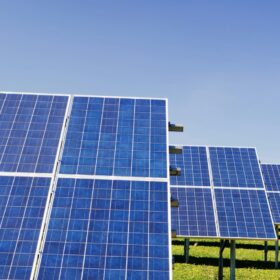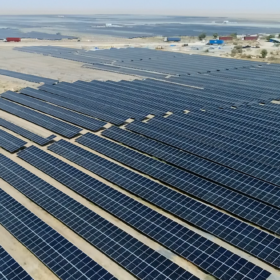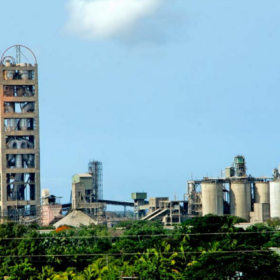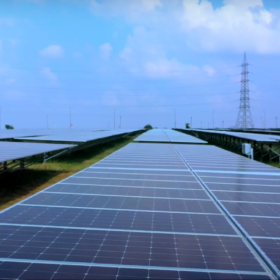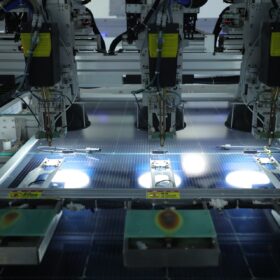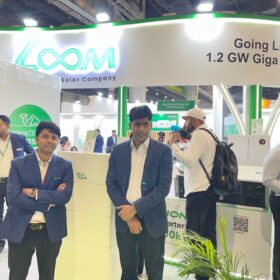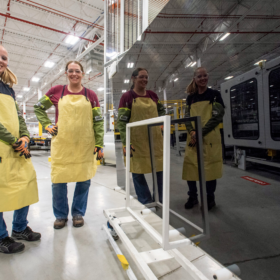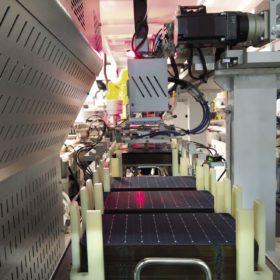Oriana Power commits INR 10,000 crore renewable energy investment in Rajasthan
Oriana Power Ltd has signed a Memorandum of Understanding (MoU) with Rajasthan government to invest INR 10,000 crore for project development across solar, green hydrogen, and energy storage solutions.
RMC Switchgears to set up 1 GW solar module, mounting structure manufacturing facility
RMC Switchgears will build a solar manufacturing facility with an annual production capacity of 1 GWp of PV modules and an equivalent capacity of module mounting structures in Rajasthan.
Waaree Energies secures module orders for 398 MW of solar projects
Waaree Energies has secured PV module supply orders for two solar projects of 249 MW and 149 MW, respectively. The orders have been placed by a domestic renewable power developer.
JSW Energy secures 445 MW of C&I renewable energy projects
JSW Energy will develop a wind-solar project for 68 MW power supply to DCM Shriram. Among other projects, it has secured a 130 MW solar power purchase agreement with Indus Tower.
Madhya Pradesh allots land for solar manufacturing projects
Madhya Pradesh has received solar manufacturing proposals from Grew Energy, Insolation Green Energy, Premier Energies Global, Saatvik Solar and other companies. Land allotment letters for these industrial units were recently given away by the State’s chief minister.
Sasken achieves energy neutrality
Sasken Technologies meets a significant 78% of energy requirements across all its India facilities through renewable sources. To bridge the remaining gap and achieve a 100% green energy footprint, it utilizes International Renewable Energy Certificates.
Premier Energies to set up new 1 GW TOPCon solar module facility by March 2025
Premier Energies Global’s board of directors has approved the setting up of a 1 GW TOPCon solar module manufacturing facility. This facility is an addition to the 4 GW TOPCon integrated cell-module capacity that the company is establishing in Telangana.
Navigating India’s solar operations and maintenance market
The sheer scale of solar installations means that ensuring consistency in operations and maintenance practices across the country is no easy task. Moreover, as technology continues to evolve, companies will need to keep up with the latest innovations to stay competitive.
Ambuja Cements commissions 200 MW solar project in Khavda
The 200 MW solar power project in Khavda is part of the company’s ambitious 1 GW renewable power (solar+wind) project along with 376 MW from waste heat recovery systems.
ReNew to delist from NASDAQ
A consortium of ReNew Energy Global promoters including Masdar, CPP Investments, Abu Dhabi Investment Authority (ADIA) and Sumant Sinha has offered to buy out the company’s publicly listed shares.


